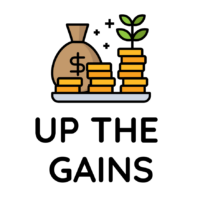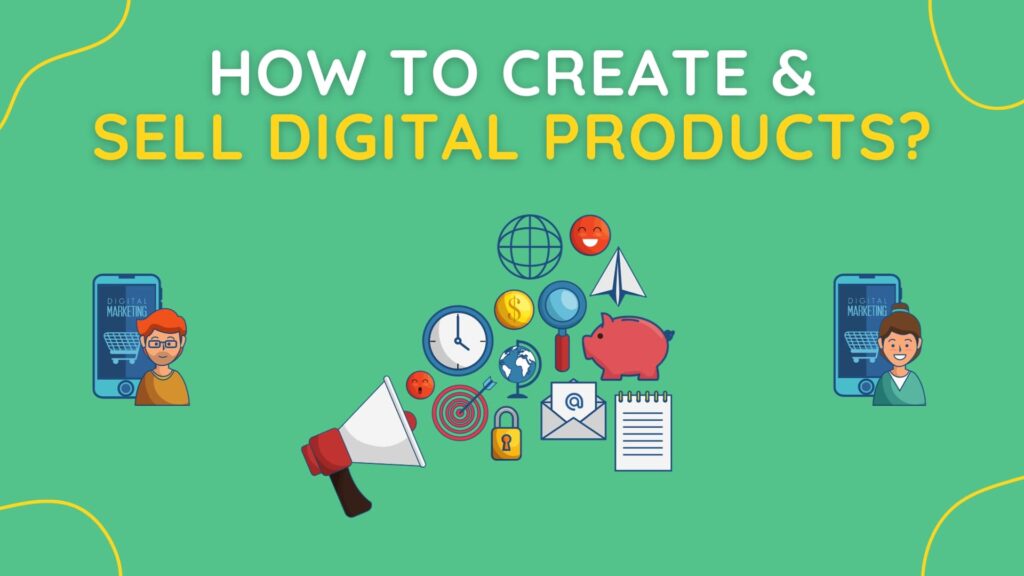
Sammie Ellard-King
I’m Sammie, a money expert and business owner passionate about helping you take control of your wallet. My mission with Up the Gains is to create a safe space to help improve your finances, cut your costs and make you feel good while doing it.
In the realm of online entrepreneurship, digital products are the new gold.
They’re popular, easy to distribute, and best of all, they can be created once and sold infinitely, without the need to replenish inventory.
For creatives, bloggers, educators, and freelancers like me, it’s a dream come true.
There’s a common myth that selling digital products won’t rake in much money. But let’s debunk that right now – the digital product space is a multimillion-dollar industry.
Whether you’re looking to start a business or just want to make some passive income online, learning how to create and sell digital products is a skill that’s worth its weight in gold.
Key Takeaways
-
Digital Efficiency: Create once, sell infinitely – digital products offer a low-overhead path to global markets.
-
Launch Smarts: Tease, launch, and iterate – strategic marketing drives digital sales success.
-
Traffic Mastery: Mix organic and paid channels, harness influencers, and choose the right platform to maximise digital product visibility and sales.
Table of Contents
How To Create And Sell Digital Products?
To create and sell digital products you need to combine two different sides of the brain.
Are you going to be better at creating than selling or selling over creating?
Who knows but these days with the amount of tools and helpful pieces of content like this you only need to be semi good. You take the rest from others, make it your own and create something unique.
Coming up with a new creative format or sales technique is two things:
- Stupid.
- Really stupid.
Well, you’d be right. It is a brilliant side hustle idea and it can also be a multi million pound business if you learn how to scale.
So in this piece that’s what we’re going to do – show you everything that’s worked, is working and will continue to work until the internet doesn’t exist.
Join over 1,000 others learning how to go from £0-5k with just 60 minutes work a day.
Includes everything you need to create, build and sell profitable digital products in a niche you're already passionate about.
Listen to my podcast episode on digital products 🎙️
This episode is a short 15 minute dive into a tactic that I’m using right now which is killing it.
It’s essentially everything you need to know about how to sell digital products through social media and how to create one that people actually want!
What are digital products?
Before plunging into the nuts and bolts of creating and selling your own digital products, it’s indispensable to understand what digital products actually are.
Quite simply, they’re intangible assets that exist in a virtual, digital form.
They range from templates, PDFs, software, downloadable music files, printable posters and cheat sheets to intricate digital design artifacts.

Types of digital downloads
Digital downloads, or digital products, run a broad gamut.
From a content creator’s perspective, the possibilities are indeed endless – limited only by one’s imagination and the needs of the market.
In general, popular digital downloads include:
- Learning Materials: eBooks, online courses, webinars and their recordings, templates etc.
- Music Files: MP3s of your songs, instrumentals or even audiobooks.
- Design Artefacts: Printable posters or digital art files that people can use for commercial or personal purposes.
Why Sell Digital Products versus Physical Goods?
You might wondering – why sell digital products instead of physical goods? But hear me out.
Selling digital goods frankly outperforms the physical ones on various fronts and in my opinion is a wonderful way to make money.
Reach Global Markets: These are products that are accessible worldwide, which eliminates many logistical issues and the need for physical storefronts.
Cost Effectiveness: With no packaging, storing or stock replenishing requirements, your overheads can be significantly lower.
High Profitability: There’s no physical cost to reproduce digital products. For instance, designer Arthur Trusov reportedly earned over $1 million selling digital products on a video game platform. Note – results may vary!
Easy to Adjust: If you want to tweak any part of a digital product, you can do so infinitely with much ease.
No Shipping Woes: And of course, no shipping means no transportation or delivery risks associated with physical goods.
Instant Delivery: Digital goods ensure lightning-quick delivery as customers merely need to download them, making consumer satisfaction nearly instant.
It’s worth it, isn’t it? Delivering unimaginable flexibility and profitability, digital goods are indeed paving a new, rewarding mix in the basket of online entrepreneurship.
Add this to the prospect of reaching out to a global market – that’s where the true magic begins.
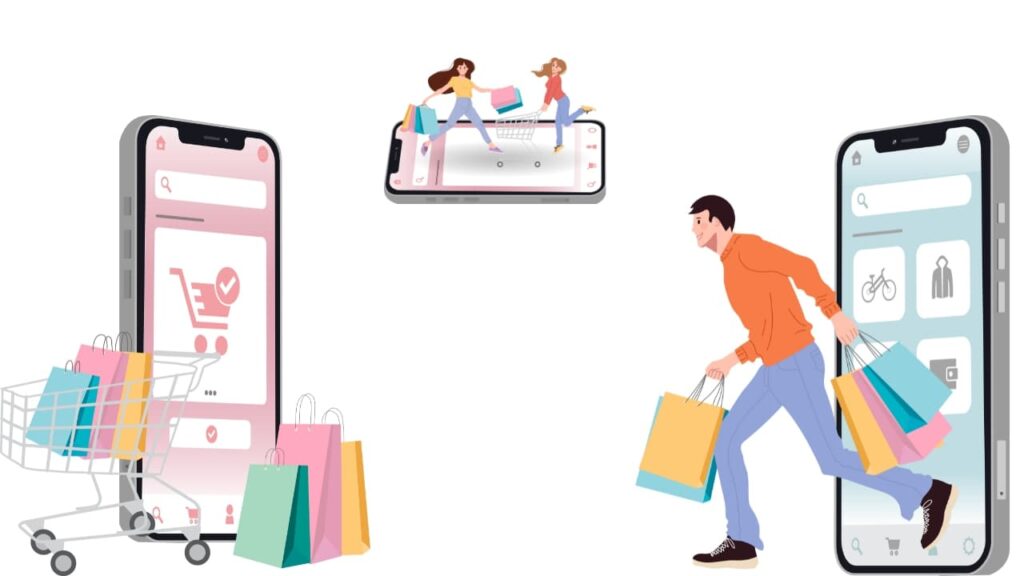
Simple Digital Product Ideas
Facing a bit of a block on what digital products to create? Well here to are ten simple digital product ideas that you can start working on right away.
1. Digital Courses: Aimed at imparting skill, these can be structured as video lectures, PDF guides, or even quizzes.
2. eBooks: skyrocketed in popularity, from novels to self-help guides, there’s an audience for it all.
3. Photography: With the rise of content creation, unique, high quality photos are highly sought after.
4. Graphic Designs: Another field with high demand, infographics, brand logos, posters, you name it!
5. Software Plugins or Themes: Are you well-versed in the code-talk? Create plugins or themes that simplify tasks.
6. Music or Audio Clips: For the musically inclined, creating jingles, sound effects or background scores can be fruitful.
7. Online Coaching: Guiding individuals to reach their personal or professional goals is a rewarding prospect.
8. Consulting: Be it business, marketing or tech, your expertise can guide corporations towards success!
9. Digital Marketing Services: Skilled in SEO, social media, content writing? Digital marketing is booming.
10. Mobile Applications: Got an innovative idea? Mobile applications can be profitable if they serve a unique purpose.
To create and sell these digital products, simple software like Canva, Google Docs, or your trusty camera often do the trick.
There’s a lot in between which we’re about to cover but once the product is ready, you list it for sale on digital marketplaces, through affiliates or partnerships, or your own website.
If you go the website route then I highly recommend using software like WooCommerce for WordPress as it’s free! But, I’m big into Stan.Store at the moment – more on that later on.
Bold marketing strategy is key – regardless how good your product, if people don’t know about it, will it sell?
End of the day, your creativity, passion, and skills mould these ideas into products that’ll thrive in the vibrant world of online entrepreneurship.
Join over 1,000 others learning how to go from £0-5k with just 60 minutes work a day.
Includes everything you need to create, build and sell profitable digital products in a niche you're already passionate about.
How To Create A Digital Product From Scratch?
Creating a digital product encompasses several steps from ideation to marketing. Let’s delve into this process in detail:
1. Brainstorm and Research
Before getting excited about a digital product idea, it’s crucial to evaluate its demand. Google Trends is such a tool to check the interest in the product keyword and find related search queries.
See What’s Already Out There
Conduct a SWOT analysis to compare your product with existing ones. This analysis will inform you about the strengths, weaknesses, opportunities and threats your product might face.
Using AI Tools to Get Ideas
In this digital era, AI tools like ChatGPT are available to aid in generating product ideas.
Thoughtfully leveraging these can enhance your brainstorming process.
Try this ChatGPT prompt
I’m a passionate ‘insert topic’ that’s looking to launch my own digital product. I’ve yet to kickstart anything like this before but have good knowledge of the space. I’m a beginner in digital marketing so please bare that in mind. What could be 5 amazing ideas for digital products that I could look into?
2. Validate Your Idea
Carving out a specific niche matters, as this can make your product stand out in the market. Identifying a niche with constant demand is the key to sustainable sales.
For me, I would also look to either host an in person or a live event. Something where you can test whether people are interested in the topic.
For example, if you had a product about 15 minute meals for busy mums then you could host a free cooking class. If your class is about running you could do a local meet up.
Getting at least 20-30 people show up and be interested in the product is a good sign.
I got this from Daniel Priestly who did this incredible interview with Ali Abdaal that you should watch here.
How to Find a Good Niche?
You can find a profitable niche by analysing which product areas are underserved or attract a loyal, passionate following.
Be sure to confirm that your chosen niche aligns with you. This is key as you end up being the secret sauce whether you like it or not.
Also make sure that more than 10 people actually like and want this thing. It needs to be able to scale to have 1000s of sales otherwise it’s not a good product.
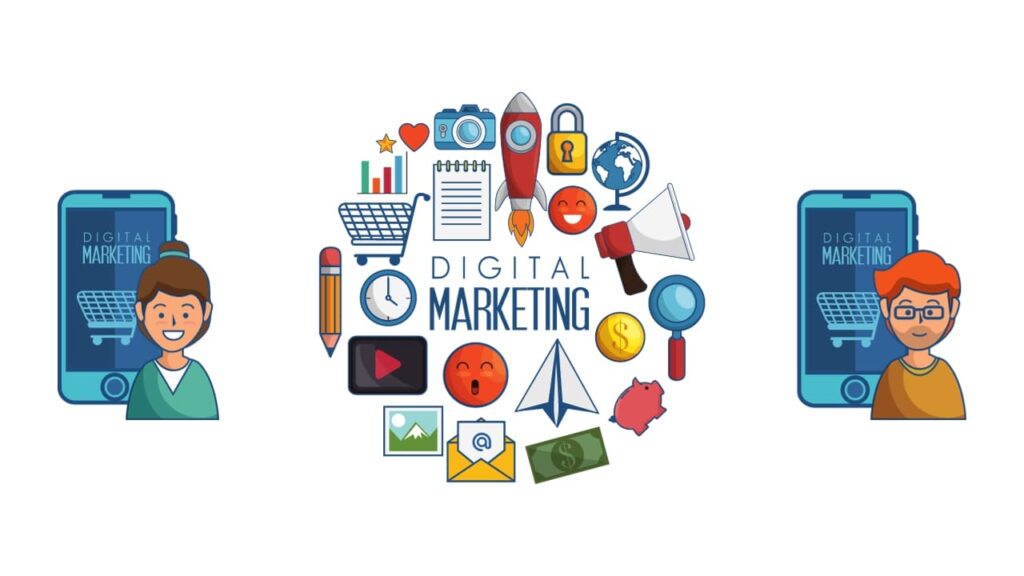
4. Find a Target Market
Keyword research can help you understand the interests of your potential market. Real-time market trends can signal what the market is currently interested in.
5. Identify the Cost of Your Digital Products
The cost of your product should reflect both the value it provides and what the market is willing to pay. Collect data about unit sales, customer acquisition rate and customer lifetime value to evaluate demand and profitability.
7. Build A Professional Online Presence
Your online presence is your digital storefront. Design it to reflect the quality and professionalism of your products.
8. Create Your Product
Today, there are various software tools available to create a digital product, depending on the nature of the product. Be sure to pick the tool that’s the best fit.
9. Market Your Digital Products
Craft engaging, persuasive copy that clearly communicates the value of your product and convinces potential customers to buy.
Email Subscribers
A list of email subscribers serves as a direct line of communication with potential customers. Regularly send them useful content and product updates to keep them engaged.
Promote a Free Lead Magnet
A free lead magnet like an eBook, course or guide can attract potential customers. Once they’re interested, you can promote your main product as an upgrade.
Collect Preorders
Preorders prove there’s demand for your product. This approach also allows you to generate some revenue before the official product launch.
Offer a Money-Back Guarantee
Potential customers are more likely to purchase if they know they can get their money back if the product doesn’t meet their expectations.
10. Leverage Social Proof and Customer Reviews
Encourage customers to leave reviews of your digital product. These reviews serve as social proof, increasing trust in your product and influencing potential customers’ buying decisions.
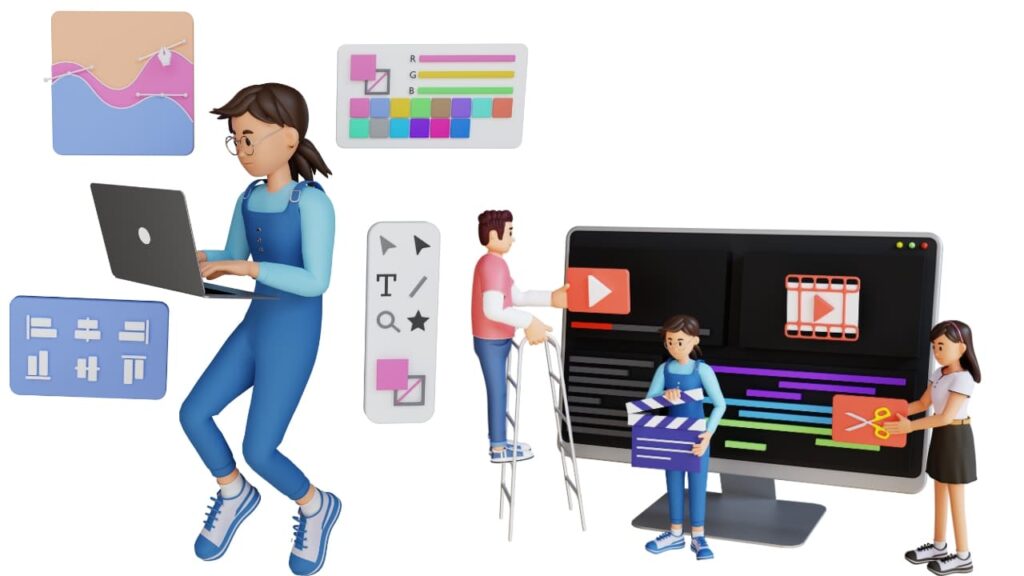
How to get traffic to my digital products?
There’s more to selling digital products than just putting them out there. Generating traffic to your products is every bit as vital.
Whether you’ve built a following over years, or you’re just starting out, getting traffic to your products is key to making them sell.
Let’s delve into this further.
Organic vs paid traffic
Organic traffic, as we know, is traffic that comes to your website ‘naturally’, without you having to pay for it: through search engine results, for instance, or from social media sites.
To an extent organic traffic is about quality over quantity.
People who find your products organically are often already looking for what you’re selling, which makes them likelier than paid-for visitors to convert into customers.
However, organic traffic doesn’t mean you can just sit back and wait for customers to find you. You have to actively promote your products and your brand.
This means creating high-quality, SEO-friendly content that will get your webpage to the top of search engine results, and regularly engaging with your followers on social media.
Paid traffic, on the other hand, is exactly what it sounds like – traffic you pay for. This could be through PPC (Pay Per Click) advertising, social media sponsorships, display ads, or any other paid promotion.
Paid traffic can drive enormous numbers of visitors to your website quickly, but this doesn’t guarantee conversions.
You have to work just as hard to make these visitors into customers.
When it comes to organic vs paid – it all comes down to your model and content strategy.
Should you focus on organic or paid traffic?
The answer, of course, is both, but don’t do paid without seriously knowing what you’re doing.
I sessioned a tonne of YouTube videos and still failed and lost a bunch of money. If you can grow with just organic for me, stick with that and when you’ve made some money – pay a pro to do your paid traffic.
Balance is the key, and the right mix will vary depending on your products and your customer base.
Start organically, get to know your customers, and scale up with paid promotions as needed. This will maximise the benefits of both organic and paid traffic – without relying too much on either.
Third-party Websites
There are numerous reliable third-party sites where you can sell digital products.
We have a guide on ‘how to sell digital products without a website‘ if you’re interested in taking this route.
These platforms can distribute, market, and sell varying types of digital downloads. Here are some features you should look for in a selling platform.
1. Digital Storage
A good platform will provide safe and convenient storage for your digital products. It should ensure a seamless download process for your customers.
2. High quality sales pages
You want visually appealing sales pages that allow both images and text to be dynamic. Display and conversions are everything so having one that allows branding and video are also important.
Then you need to nail your copywriting out the park in order to bring in those sales.
3. Shopping Cart
Check if the platform has an integrated shopping cart, making it easier for customers to make purchases, and you to track those purchases.
4. Integrations with Top Payment Gateways
Make sure the platform is integrated with top payment gateways like PayPal, Stripe or something with credit card payments. The payment process should be easy and secure for the customer.
5. No Hidden Transaction Fees
Be vigilant of any hidden transaction fees. Some platforms seem attractive with low listing fees, but they might have high transaction fees that could take a large slice of your earnings.
Keeping these points in mind shall aid in finding the perfect platform to start selling your digital products.
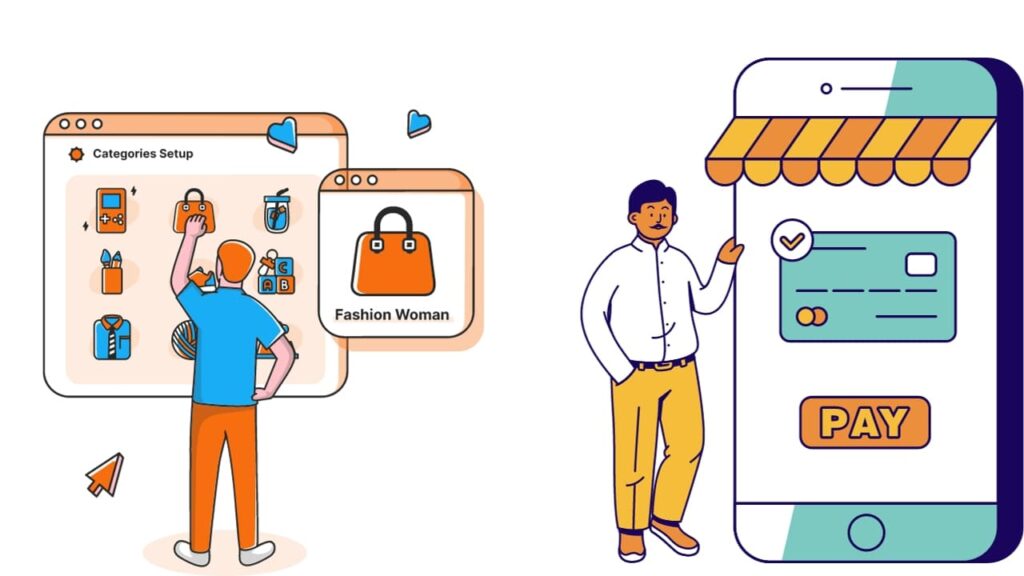
Your own website with ecommerce
Having an online store is a brilliant platform for selling digital products.
For me, it’s necessary as creator when you’re utilising long term marketing tactics like SEO, paid traffic and generally forming a brand around your products.
Possessing your own online store does not only grant you full control over your store’s appearance and functionality, but also enhances your brand’s reputation.
This professional look creates a favourable impression on potential customers, leading to increased traffic and, ultimately, more sales.
To create an online store, you can use a content management system (CMS) like WordPress with an eCommerce plugin like WooCommerce or Shopify.
Shopify is an excellent example of a one-stop-shop platform for hosting, marketing, and selling digital products. You can access thousands of extensions in the App Store to cater to your digital products and even list them on socials.
There are lots of useful videos on YouTube which can help you get started as a beginner.
Join over 1,000 others learning how to go from £0-5k with just 60 minutes work a day.
Includes everything you need to create, build and sell profitable digital products in a niche you're already passionate about.
Best 3rd party websites to sell digital products
In the quest to maximise sales of your digital products, it’s imperative to choose the ideal online platform.
These platforms not only host your products but also provide additional tools to enhance your selling capabilities. Here are some noteworthy websites where you can sell digital products:
Gumroad
I’d be remiss not to kick off this list with Gumroad. This platform is perfect for artists and creators as it offers an incredibly user-friendly interface enabling them to set up an eCommerce store without encountering difficulties such as coding or technical issues.
When you upload your digital products to Gumroad, the provided auto-generated link can be added anywhere on your website, transforming that section into a storefront. The analytics tool is another big plus, allowing you to track views as well as keep tabs on sales and their origin.
Notably, Gumroad also generates licence keys if you’re selling software such as mobile apps or games.
Stan.Store
Stan.Store is another platform that has gained popularity due to its ease of use. It allows you to create an account, select a subscription plan and customise the appearance of your store in a simple step-by-step process.
This platform also comes with a mobile app for keeping track of your store’s performance and receiving notifications about new orders.
Shopify
Shopify isn’t just for physical goods – it’s perfect for digital products as well. With over4000 free Shopify apps, delivering digital products to your customers has never been easier.
Plus, you get access to a variety of resources which help you launch a store and if you’re a bigger company train your teams.
I’d strongly advise utilising these resources to get the most out of Shopify.
Teachable
Few platforms offer as much functionality geared towards online course sellers as Teachable.
It not only allows you to host and sell a variety of digital products such as PDF files and videos but also facilitates direct interaction with your students.
Clients have given it high praise for its usability and customer service.
MemberPress
MemberPress stands apart as a platform primarily designed for subscription-based products like ongoing video tutorial series or newsletters.
Apart from core sales and marketing features, it impressively integrates membership management, allowing for exclusive access to customers who’ve signed up for your subscription.
Easy Digital Downloads
Last but far from least, Easy Digital Downloads is a WordPress plugin designed precisely for selling downloadable products. Just embed the shortcodes it generates anywhere on your website to display and sell your digital goods.
What’s more, it comes with detailed metrics on your audience and purchases – a handy feature for anyone looking to optimise their sales strategy.

Benefits of selling digital products?
In the fast-growing digital market, it’s beneficial to understanding the advantages afforded by selling digital products.
The key benefits of such an online business model include scalability, passive income, and low startup costs.
Let’s dive deeper into these benefits.
Scalability
In the digital world, scalability is unlimited. Unlike selling physical products, where you need to keep an active inventory and manage supply and demand, selling digital products is relatively stress-free.
The same digital product, be it an ebook or a software, can be sold and downloaded countless times. So, if your business grows, you won’t need additional infrastructure or resources to cater to more customers.
Remember, your business should get bigger while still delivering excellent customer service and value to your clients.
Passive Income
Very few business models can offer the advantage of earning a passive income. Once you’ve set up your digital product sales funnel, you can consistently generate sales without putting in extra work.
Essentially, you set it, forget it, and the paychecks keep rolling in. It’s as if you’re sleeping and the money keeps piling up.
This model is immensely attractive to entrepreneurs and content creators as it allows you to enjoy more freedom and flexibility.
Your time is freed up to focus on more core tasks or even leisure activities.
Low Startup Cost
Another essential factor is the low startup cost associated with selling digital products. You don’t need substantial investments and shareholders to get started.
All you need is a good digital product idea and a small amount of money to create a website or sign up on a digital product platform.
These factors significantly reduce your business risks, making digital entrepreneurship a lucrative and feasible endeavour.
Join over 1,000 others learning how to go from £0-5k with just 60 minutes work a day.
Includes everything you need to create, build and sell profitable digital products in a niche you're already passionate about.
Tips for selling digital products
Crafting a strategy for selling digital products isn’t about picking one path, it’s about knowing which avenues are available and exploiting them for maximum benefit.
Here are some areas you should focus on to increase your digital product sales.
Choose the right marketing channels
Digital marketing is an umbrella term embracing numerous strategies, from email campaigns to social media promotion and SEO (Search Engine Optimisation) efforts.
Each channel is a unique tool, fit for different jobs. You have to find the one that works for you and most importantly where your audience hangs out.
For instance, social media platforms like Instagram, TikTok and Facebook are phenomenal for connecting with customers and brand building while email marketing is an old, but gold technique for staying in touch with existing customers, offering deals and sharing updates.
For me, right now making money with Instagram is bringing me the best results when comparing it with TikTok and Facebook.
Content marketing using blog posts or informative videos via YouTube is another excellent way to subtly promote digital products.
If you want to learn how to start a blog then we have plenty of guides on that!
Then you’ve also got products like podcasts and paid advertising to think about too!
If you’re really a marketing wizard then combine two or three channels to become a real authority in the space.
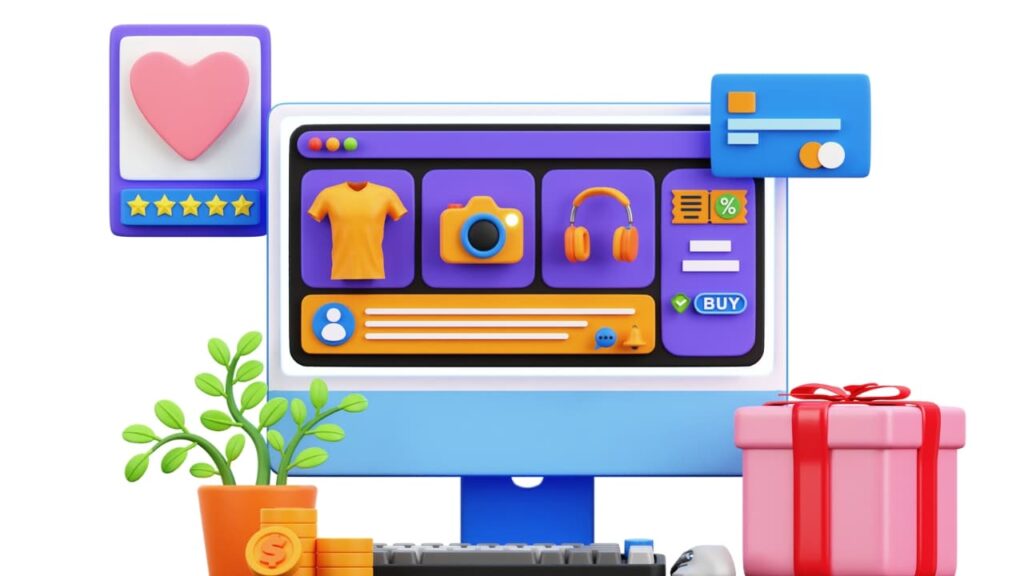
Handling Customer Support and Inquiries
Customer service is a facet of eCommerce that often goes unnoticed, but it’s instrumental in winning customer loyalty and enhancing your brand’s reputation.
Dealing with customer inquiries effectively boosts trust and encourages word-of-mouth referrals
Some essential tips for efficient customer support include, fast responses, ensuring you understand the customer’s needs, using simple language to explain solutions, and constantly training your team about your product features.
Get on Podcasts
One often underused strategy is getting featured on popular podcasts that cater to your target demographic.
Podcasts have exploded in popularity in recent years and offer a new avenue to engage potential customers. It provides an opportunity to share insights about your digital product and serves to establish your expertise in the field.
Also look to partner with the shows you go on maybe giving a percentage kick back on any sales they bring in via a discount code or special link you provide.
Whilst you’re there check out The Money Gains Podcast – which is my podcast interviewing entrepreneurs and top minds in the financial industry.
Partner with influencers
Akin to word-of-mouth, influencer marketing makes use of social authority to drive sales.
By partnering with an influencer whose audience aligns with your target customer, you’ve a reliable avenue to introduce and endorse your digital product.
This connection creates trust and enhances chances of conversion.
Running a successful digital product business involves a blend of effective marketing strategies, top-notch customer support and exploiting opportunities for maximum visibility.
This isn’t a linear process and requires constant tweaking, but hitting the right balance can result in a significant increase in sales.
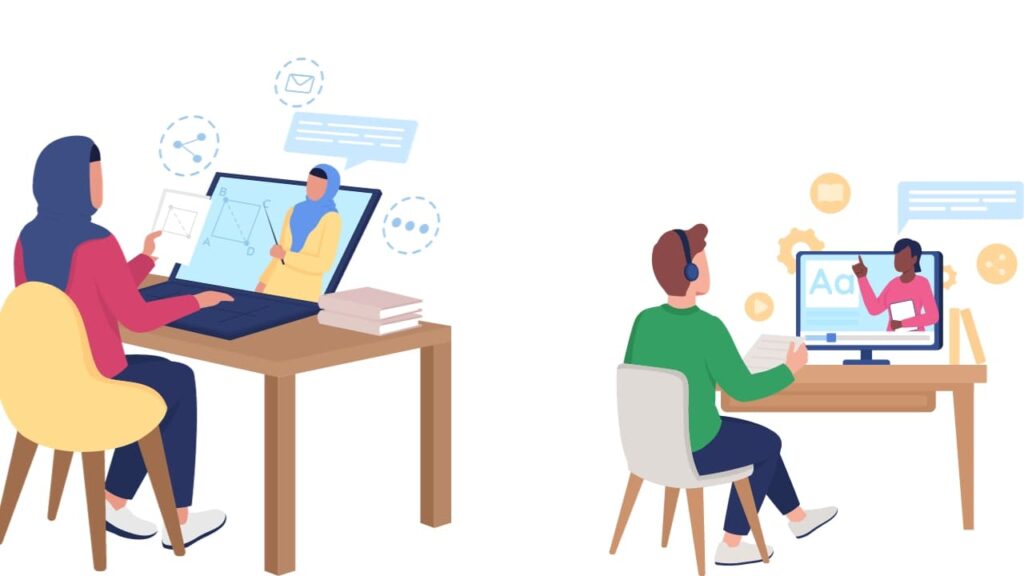
How to launch a digital product?
Launching a digital product successfully hinges on meticulous planning and targeted sales tactics. Here’s a streamlined guide to ensure your digital product makes an impact:
Pre-Launch Phase
Teaser Campaigns: Create excitement with a countdown, sneak peeks, and teasers on social media and email lists. Use visuals or demos that hint at the value of your product without giving everything away.
Early Bird Sign-ups: Offer special pricing or bonuses for those who sign up or show interest before the launch. This not only builds a potential customer base but also generates early buzz.
Content Marketing: Publish blogs, infographics, or videos that align with the problem your product solves. This content should educate your audience and lead them to your product as a solution.
Launch Timeline
Soft Launch: Begin with a soft launch to a select group of users. Use their feedback to fine-tune the final product.
Staged Rollout: Break the launch into stages, starting with your most engaged audience (e.g., your email list), then moving to a broader audience through social media and paid ads.
Official Launch Day: Plan an event-like launch with live Q&A sessions, webinars, or online parties. Encourage shares and interactions to increase visibility.
Sales Campaigns
Limited-Time Offers: Run time-sensitive discounts or bundle deals to create urgency.
Affiliate Partnerships: Collaborate with affiliates to broaden your reach. Offer them a share in the profits to incentivize sales.
Exclusivity Angles: Present your product as a ‘limited edition’ or ‘exclusive access’ to heighten interest.
Post-Launch Strategies
Customer Surveys: After purchase, send out surveys to gather feedback, which can help improve the product or inform future projects.
Testimonials and Reviews: Encourage buyers to share their experiences. Showcase positive testimonials prominently on your sales page and marketing materials.
Update Campaigns: Keep the product fresh with updates, and communicate these changes to your customers. Regular updates can re-engage past customers and attract new ones.
FAQs
What marketing channels are effective for selling digital products?
Social media, email marketing, content marketing and SEO are all effective ways to market digital products. Understanding your target audience and choosing the right channels is key for successful digitals sales.
Should we regularly update our digital product?
Yes, the digital landscape is continuously evolving, so it’s important to stay agile and adapt your product accordingly.
Make sure you keep up to date with trends and changes that impact the relevancy of your products.
Launching new and updated versions are great ways of extneding product life but also keeping your audience trusting your advice.
How can partnerships boost sales of digital products?
Partnerships with other companies or influencers can significantly increase the visibility and credibility of your products, leading to higher sales. Make sure the partners you choose align with your target audience for maximum effectiveness.
Conclusion
So, we’ve journeyed together through the ins and outs of creating and selling digital products. We’ve explored the potential of different marketing channels, the power of customer support, and the impact of strategic partnerships.
We’ve also delved into the importance of launch tactics and the need to continually evolve your product.
Remember, it’s not just about the initial launch – it’s about the journey that follows. It’s about staying agile, adapting to changes, and keeping your audience engaged.
This is your roadmap to success in the digital landscape. Now, it’s time to put these insights into action. Forge ahead, make your mark, and let your digital products shine!
Share on social media
Disclaimer: Content on this page is for informational purposes and does not constitute financial advice. Always do your own research before making a financially related decision.
